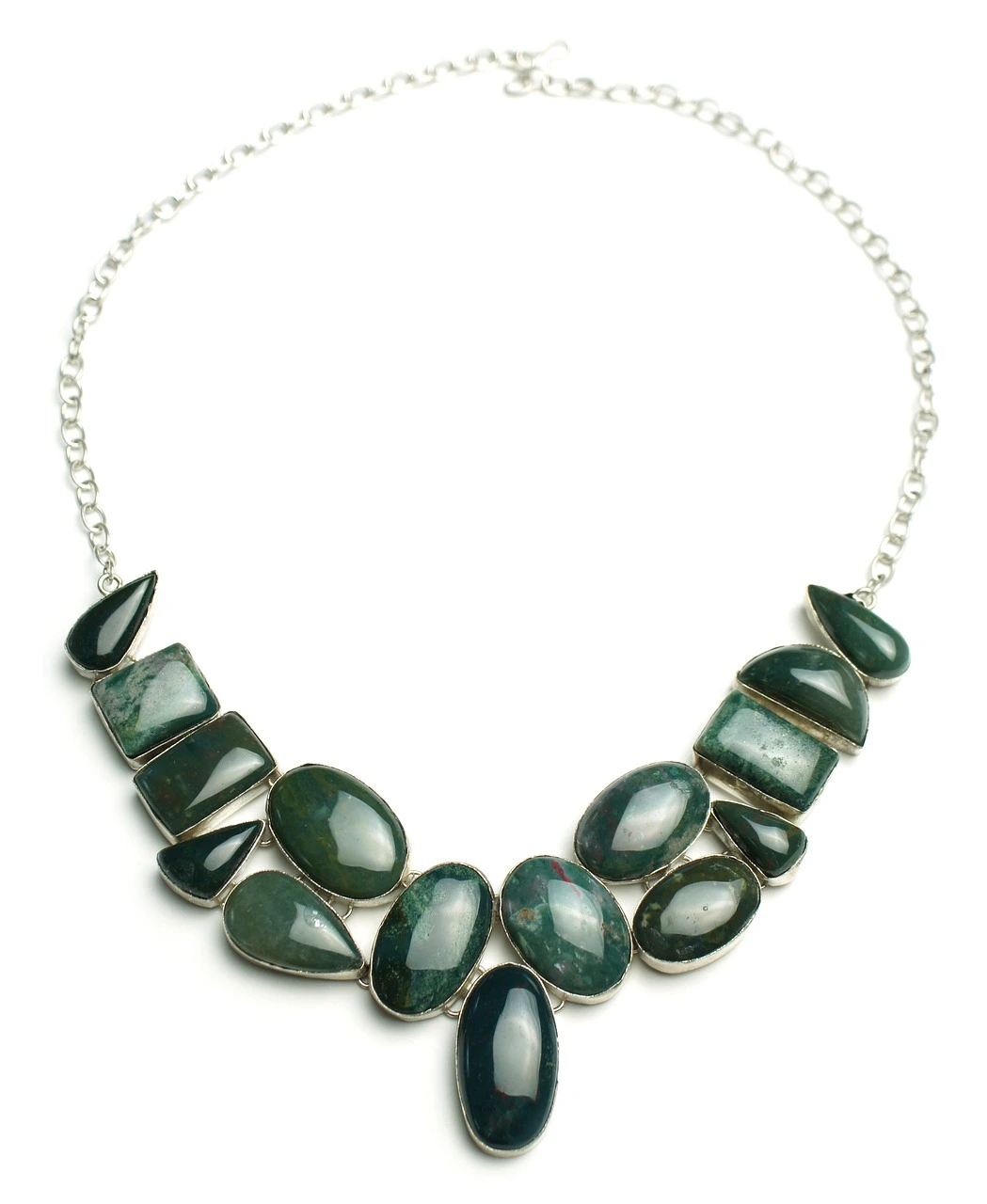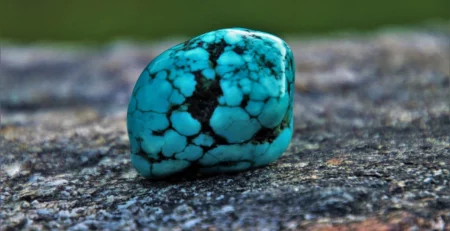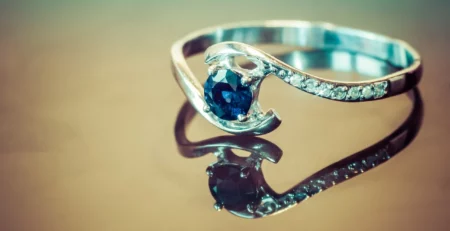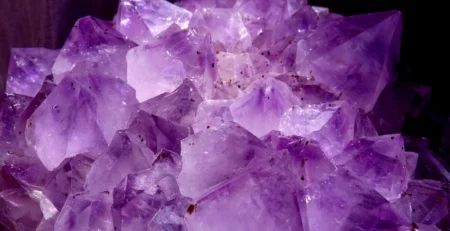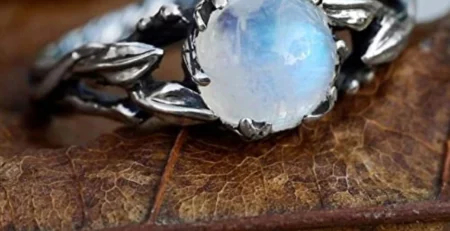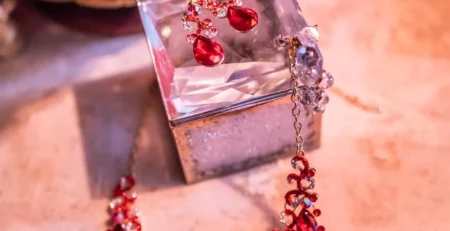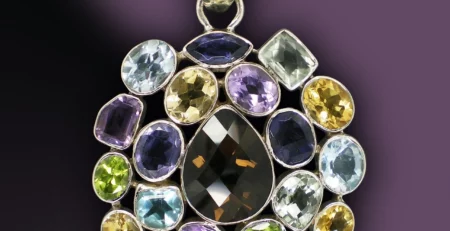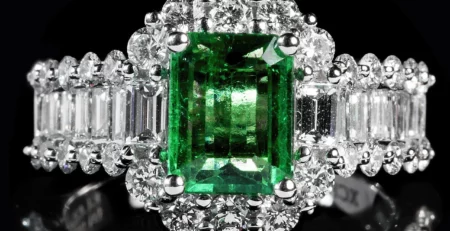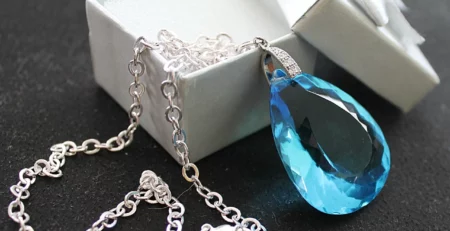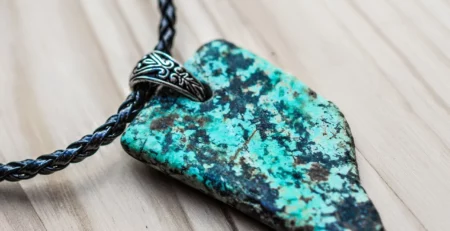All About March Birthstone – Aquamarine, Bloodstone
Birthstones have long been associated with specific months and are believed to bring good luck, protection, and various other benefits to those who wear them. March is no exception, with not one but two beautiful birthstones associated with it: Aquamarine and Bloodstone. Here we will explain these stunning top gemstones, their meanings, properties, and why they make such perfect gifts for March-born individuals.
- Aquamarine: The Serene Sea Gem
- Bloodstone: The Stone of Courage and Healing
- Associated History of both Birthstones
- How to Wear March Birthstones:
- Tips Caring for March Birthstones:
- Gift Ideas with March Birthstone:
- Interesting Facts and Figures of March Birthstone
- Things about March Birthstone that you didn’t know
- Key Takeaways
- FAQs
Aquamarine: The Serene Sea Gem
Aquamarine is the primary birthstone for March, and its name reflects its mesmerizing, sea-like color. Here’s everything you need to know about this captivating gemstone.
Aquamarine derives its name from the Latin words “aqua marina,” which mean “water of the sea.” This name is fitting because Aquamarine’s soothing blue-green hue resembles the tranquil waters of the ocean. This gemstone has been cherished for centuries for its serene and calming qualities.
Meaning and Properties:
Serenity and Peace: Aquamarine is often associated with tranquility, making it an ideal gemstone for those seeking inner peace and emotional balance.
Courage: It is believed to instill courage and clarity of thought, helping individuals overcome obstacles and make important decisions.
Protection for Travelers: In ancient times, Aquamarine was thought to protect sailors and travelers, ensuring safe journeys across the sea.
Also Read – All About October Birthstone – Opal, Tourmaline
Bloodstone: The Stone of Courage and Healing
Bloodstone, the secondary birthstone for March, is a unique gemstone with a rich history and remarkable healing properties.
Meaning and Properties:
Courage and Strength: Bloodstone is often associated with courage, strength, and protection. It is believed to inspire bravery in the face of adversity.
Healing Properties: This gemstone is thought to have powerful healing properties, particularly in relation to blood-related ailments. It is believed to purify the blood and improve circulation.
Enhanced Energy: Many people believe that Bloodstone can boost energy levels and enhance vitality, making it an excellent choice for those seeking an energy boost.
Associated History of both Birthstones
Both Aquamarine and Bloodstone have fascinating histories and folklore associated with them.
Aquamarine:
In ancient times, it was believed that Aquamarine could protect sailors from the dangers of the sea, ensuring safe voyages.
It was also thought to promote marital harmony and happiness, making it a popular choice for engagement rings.
Bloodstone:
Bloodstone gets its name from its unique appearance, which features red spots resembling drops of blood on a green background.
In medieval Europe, it was often associated with the crucifixion of Jesus Christ, and it was believed that it possessed sacred and protective qualities.
How to Wear March Birthstones:
Wondering how to incorporate Aquamarine and Bloodstone into your jewelry collection? Here are some ideas.
Aquamarine:
Aquamarine is often used in rings, pendants, and earrings to create stunning jewelry pieces.
Its soothing color makes it a versatile gemstone that can complement both casual and formal attire.
Bloodstone:
Bloodstone is typically used in jewelry like rings and pendants.
Its unique appearance makes it a conversation starter and a distinctive addition to any jewelry collection.
Also Read – Top 10 Most Popular Precious Stones For Engagement Rings
Tips Caring for March Birthstones:
Proper care will keep your Aquamarine and Bloodstone jewelry looking its best.
Aquamarine:
Aquamarine is a relatively hard gemstone but can still be scratched by harder materials. Store it separately from other jewelry to prevent scratches.
Clean it gently with warm, soapy water and a soft brush to maintain its luster.
Bloodstone:
Bloodstone is a durable gemstone that can withstand everyday wear. However, it is still a good idea to protect it from harsh chemicals and extreme temperatures.
In addition, Clean it with a soft cloth or mild soap and water to maintain its appearance.
Gift Ideas with March Birthstone:
Looking for the perfect gift for a March-born loved one? Consider these thoughtful options.
Aquamarine:
An Aquamarine pendant or necklace makes a meaningful gift that can be worn close to the heart.
Aquamarine earrings make a stylish choice for everyday wear or special occasions.
Bloodstone:
A Bloodstone ring or cufflinks can make a unique and meaningful gift for someone born in March.
Bloodstone beads or a pendant on a leather cord create a rustic and masculine look.
Both of these gemstones have a rich history and powerful meanings associated with them. Whether you’re gifting them to a March-born loved one or adding them to your own jewelry collection, these birthstones are sure to bring serenity, courage, and healing into your life.
Interesting Facts and Figures of March Birthstone
- Aquamarine’s Origin: The word “aquamarine” is derived from the Latin words “aqua” and “marina,” meaning water and sea, respectively. This name perfectly captures the gemstone’s stunning blue-green color, reminiscent of the ocean depths.
- Bloodstone’s Ancient Significance: Bloodstone is also known as heliotrope, a term derived from the ancient belief that when placed in water, this stone could turn the sun red, creating a powerful connection to solar energy.
- Aquamarine’s Hardness: Aquamarine belongs to the beryl family, which includes emeralds. It is a relatively hard gemstone, ranking 7.5 to 8 on the Mohs scale of hardness, making it durable for everyday wear.
- Bloodstone’s Legends: In medieval times, Bloodstone was believed to have formed from drops of Christ’s blood falling onto green jasper during the crucifixion, hence its name. This legend contributed to its revered status and associations with healing and protection.
- Aquamarine’s Size: One of the largest aquamarine gemstones ever found weighed an astonishing 243 pounds (110 kg). As well as it was discovered in Brazil and showcased a brilliant blue hue, captivating all who saw it.
- Bloodstone’s Healing Properties: Bloodstone has been used in traditional medicine for centuries. Ancient Greeks believed it could staunch the flow of blood and was often used in amulets and talismans for healing purposes.
- Aquamarine’s Famous Admirers: Many historical figures were captivated by the beauty of aquamarine. The legendary sailor and explorer Christopher Columbus possessed a large aquamarine that he believed brought him good fortune during his voyages.
Things about March Birthstone that you didn’t know
- Bloodstone’s Protective Powers: Bloodstone was highly valued by ancient warriors who believed it could stop bleeding and protect them from injury during battles. It was often carried as an amulet for protection.
- Aquamarine’s Color Variations: Although aquamarine is known for its blue-green color, it can range from pale blue to deep blue-green. The most valuable aquamarines have a rich, intense blue hue.
- Bloodstone’s Global Presence: Bloodstone is found in various parts of the world, including India, Brazil, Australia, and also the United States. As well as each region produces bloodstone with unique patterns and color variations, making each stone distinctive.
- Aquamarine’s Symbolism: Aquamarine has long been associated with fidelity, loyalty, and friendship. It is a popular choice for engagement rings, symbolizing a deep and lasting commitment between partners.
- Bloodstone’s Cultural Significance: In ancient Babylon, bloodstone was believed to have magical properties, providing its wearer with invisibility during times of need. Furthermore, this belief highlights the gemstone’s historical and cultural significance.
Key Takeaways
- Aquamarine, the primary March birthstone, represents tranquility, serenity, and emotional balance. It is associated with courage, clarity of thought, and protection for travelers, especially sailors.
- Bloodstone, the secondary March birthstone, symbolizes courage, strength, and protection. It is believed to have healing properties related to blood-related ailments, as well as the ability to boost energy levels.
- Aquamarine derives its name from “water of the sea” and has been historically linked to safe sea voyages and marital harmony. Bloodstone’s name comes from its appearance, with red spots resembling drops of blood on a green background. In medieval Europe, as well as Bloodstone was associated with the crucifixion of Jesus and believed to possess sacred qualities.
- Aquamarine is commonly used in rings, pendants, and earrings due to its versatile and soothing color. Bloodstone is often featured in rings and pendants, serving as a distinctive addition to jewelry collections and sparking conversations.
- Proper care for Aquamarine involves gentle cleaning with warm, soapy water and also storing it separately to prevent scratches. Bloodstone, although durable, should be protected from harsh chemicals and cleaned with mild soap and water to maintain its appearance.
- Both Aquamarine and Bloodstone carry meaningful symbolism, making them thoughtful gifts for March-born individuals, reflecting qualities of courage, protection, and healing.
FAQs
What Does Aquamarine Symbolize?
Aquamarine symbolizes serenity, courage, and protection. Its name, derived from the Latin words for water and sea, reflects its tranquil blue-green hue, resembling the calming ocean. Often associated with clarity and emotional balance, Aquamarine is believed to provide a sense of peace to its wearers, making it a popular choice for jewelry that signifies harmony and tranquility.
Is Bloodstone Only Green with Red Spots?
While the classic Bloodstone features a green background with distinctive red spots, it can come in various shades of green, from light to dark. The intensity and arrangement of the red spots vary, creating a unique appearance for each stone. Some Bloodstones may also include yellow or orange colour.
Can Aquamarine and Bloodstone Be Combined in Jewelry?
Certainly! Jewelry designers often combine Aquamarine and Bloodstone to create stunning pieces that blend the serene blue-green of Aquamarine with the earthy green and red accents of Bloodstone. Such combinations provide a balanced and harmonious aesthetic, incorporating the unique energies and symbolism of both stones.

